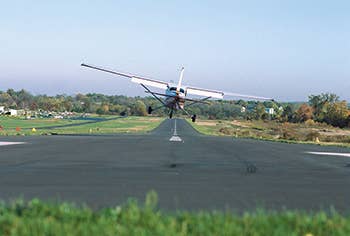
Chances are you're fairly comfortable with landing in a crosswind — up to a point. When the wind is howling, you might feel you lack the skill (or rudder authority) to track a straight line along the centerline with one wing held low into the breeze.
What should you do? Head for another airport with a runway better aligned with the wind? That's certainly one option, but you have another alternative you might not have considered.
You were probably taught to crab into a crosswind on final approach and then "kick out" of the crab in the landing flare while simultaneously banking into the wind and applying opposite rudder to maintain a straight track. But what if the wind is so strong that you run out of rudder effectiveness and can't track the runway centerline? That's when it's time to employ the crab/sideslip combo method.
The principle here is pretty simple: You'll want to bank into the wind as you normally would for a crosswind landing, yet still keep a slight crab dialed in — just enough to keep you tracking straight on the runway. Once your upwind tire hits you'll immediately want to use the rudder to align yourself with the runway and let the tire on the opposite side touch down.
You'll also want to use less than full flaps in a strong crosswind and land slightly faster since you'll need more aileron, rudder and elevator authority to maintain control of the airplane.
This isn't a technique to go out and try for the first time on your own. Fly with a competent instructor who can help you learn to gauge how much crosswind you and your airplane really can handle and how to properly execute the sideslip/crab combo.
Get exclusive online content like this delivered straight to your inbox by signing up for our free enewsletter.

Sign-up for newsletters & special offers!
Get the latest FLYING stories & special offers delivered directly to your inbox






